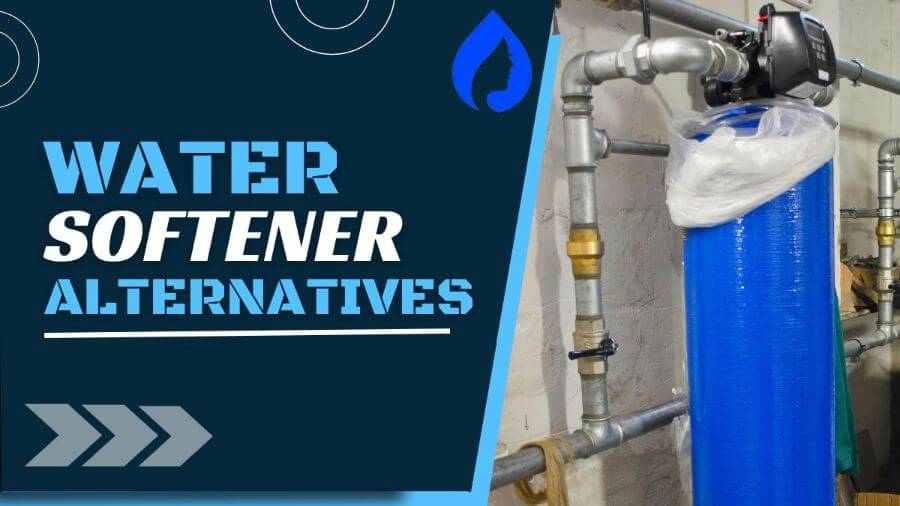
A water softener system or ion exchange water softener is one of the most effective ways to soften water and eliminate hard water.
However, it requires regular maintenance, causes environmental damage, and is expensive! Here are some of the best water softener alternatives to look for:
Keep reading to learn about five of the best alternatives to water softeners.
👉What Are the Alternatives to Salt Water Softeners?
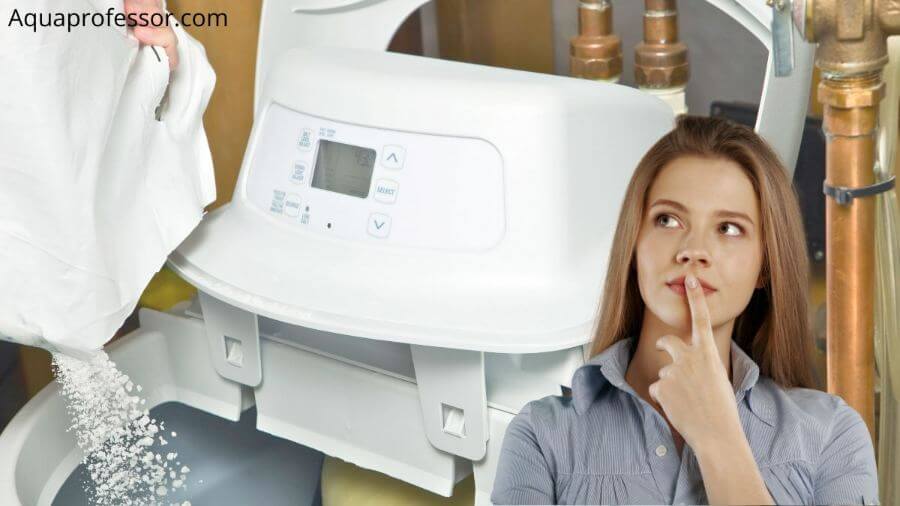
The table below shows the water softener alternatives with scale reduction and cost-effectiveness.
| Softener alternative | Scale reduction (in %) | Cost-effectiveness |
| Water conditioner (TAC) | 88-90% | Very cost-effective |
| Electromagnetic water descaler (EIP) | 50% | Cost-effective |
| Reverse Osmosis Filters | <50% | Cost-effective |
| Liquid Water Softener (Using Polyphosphates) | Data not available | N.A. |
| Nano-Filtration | 85-90% | Very expensive |
TAC = Template Assisted Crystallization
EIP= Electrically Induced Precipitation
Let’s discuss the water softening system methods one by one to get detailed information.
1️⃣Water conditioner (TAC)
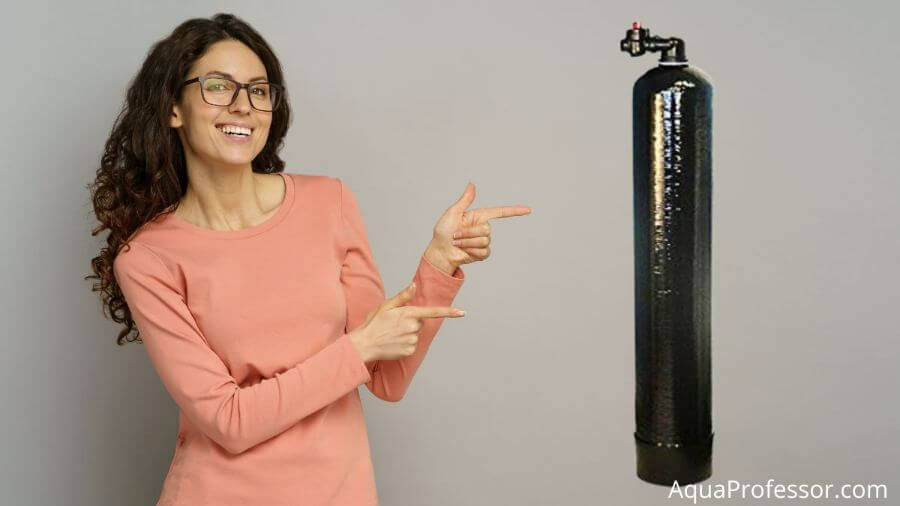
How It Works:
It is also known as a “salt-free water conditioner,” which conditions water and reduces the effect of hard water.
It operates through TAC or template-assisted crystallization in a treatment medium, which crystallizes hard water minerals and washes them away, preventing them from sticking to the surface.
This whole process takes place in a conditioning tank that has TAC media in it.
Hardness and Scale Reduction:
This is the most promising technique than other water softener alternatives, with scale reductions of around 88%–90%. It is as effective as water-softening systems for mild to medium hardness.
Pros and Cons:
Pros
- TAC systems don’t require electricity, regular maintenance, or chemicals to work.
- It is a salt-free system that doesn’t require brine discharge or backwash.
- It doesn’t remove calcium or magnesium ions, or other healthy minerals from your water.
- They are compact as they do not require any brine tanks.
Cons
- Unlike water softeners, Template-assisted crystallization systems are not very effective for high water hardness.
Cost Estimation:
A salt-free water conditioner with Template Assisted Crystallization is highly effective and can solve hard water problems for $1,000–$2,000.
Also Read: Evo Water Systems Reviews 2024 (Now Kind Water)
2️⃣Electromagnetic Water Descaler (EIP)
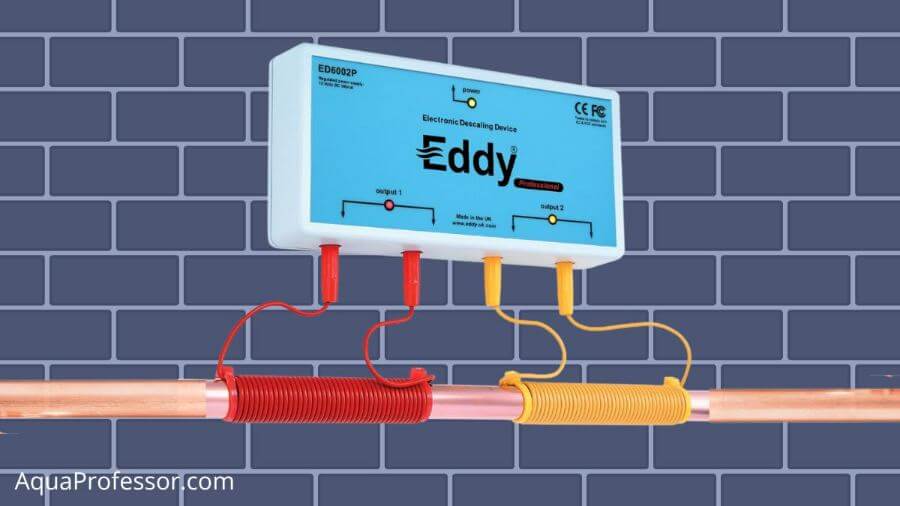
How It Works:
It is also known as an electrochemical water treatment, electrically regenerated ion exchange or an electronic water descaler. They are installed over the main water line and have either a series of magnets or coils of wire wrapped around the pipe.
This binding generates electromagnetic waves in the water supply pipes, altering the chemical structure of dissolved salts and precipitating out hard water minerals. Hence, it prevents scale deposits.
Hardness and Scale Reduction:
An electronic water conditioning system reduces scale reduction by around 50%. This forms a “soft” scale that is easily brushed off. Hence, it can be a good alternative to traditional water softeners to soften hard water.
Pros and Cons:
Pros
- It decreases limescale build-up and hence makes plumbing systems easier to clean.
- It doesn’t add sodium ions or other chemicals to your water, making it potable water.
- It is versatile, easy to install, and ideal for most homes.
- It is eco-friendly as it doesn’t waste water and uses very little electricity.
- It doesn’t remove calcium, magnesium, or other precious minerals from your water.
Cons
- Electromagnetic water softeners work on electricity; hence, it needs power for continuous working.
- The time it takes to see changes might depend on your hard water.
Cost Estimation:
This system works well and can solve hard water problems for $50–$200 only. It is a cost-effective method to treat hard water.
Also Read: 3 Best Water Softeners For Apartment
3️⃣Reverse Osmosis Filters
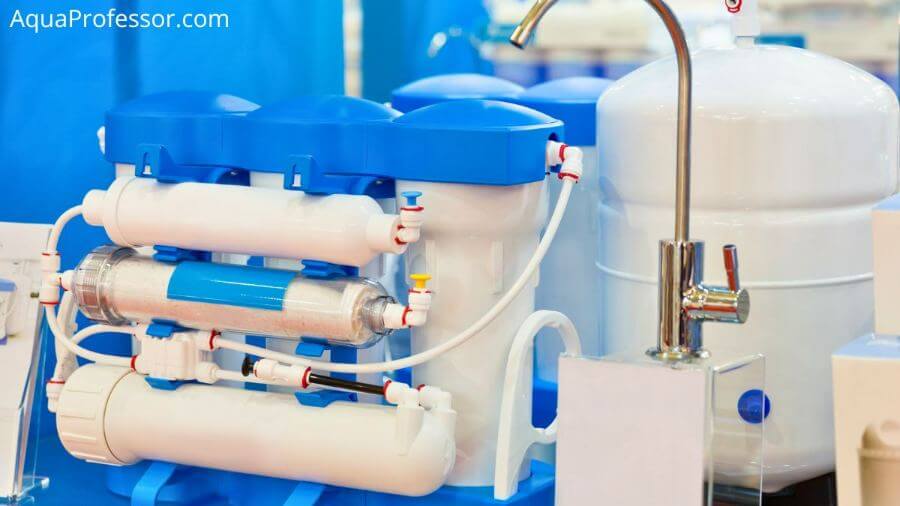
How It Works:
Reverse Osmosis systems work by pressurizing feed water into an RO membrane which retains hard water minerals and is flushed out with a small amount of wastewater. This works best for filtering different contaminants but also for mild water hardness.
Hardness and Scale Reduction:
Reverse Osmosis System can reduce less than 50% of hard water mineral scales and 99% of the dissolved solids. Hardness minerals damage the RO membranes of the reverse osmosis system, requiring frequent replacements.
Hence, they are not considered good water softener alternatives.
Pros and Cons:
Pros
- It uses more than one filter, therefore a very effective method that can eliminate up to 99% of salts, particles, and bacteria, which produces pure water.
- It reduces the amount of salt and sodium concentration in softened water.
- RO system produces good drinking water and hence, saves money on buying bottled water.
Cons
- It’s a slow process that takes time to give filtered water.
- The tiny pores of the RO membrane can be clogged easily, which might add to the cost.
- RO systems use water to flush out waste from the system and, hence, waste much water.
- Too much chlorine may damage the RO systems.
Cost Estimation:
Whole-house RO system costs around $1,500 and $10,000.
4️⃣Liquid Water Softener (Using Polyphosphates)
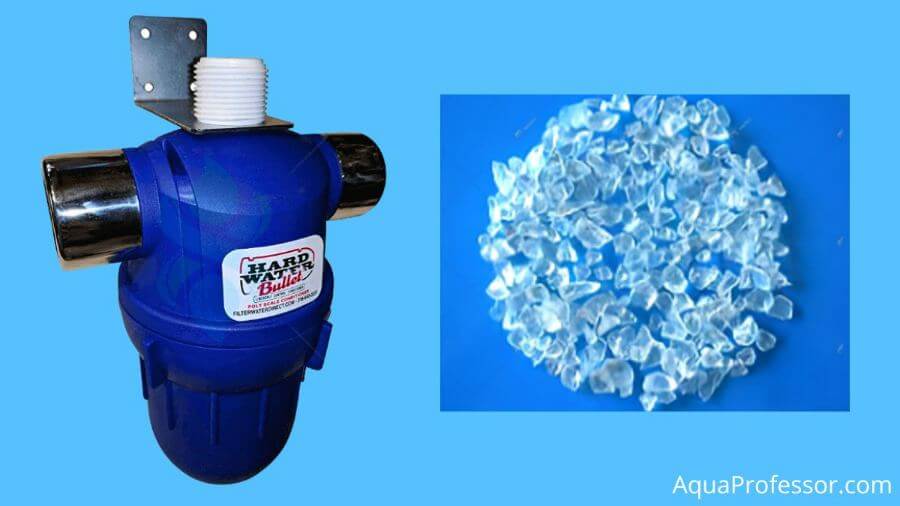
How It Works:
Its working mechanism is similar to the traditional water-softening system. However, it doesn’t use salt like sodium chloride.
Instead, it uses a food-grade, non-toxic solution called liquid polyphosphate, which helps to remove hard water minerals and prevent limescale buildup.
Hardness and Scale Reduction:
A 5-10 ppm of polyphosphate is required to reduce one ppm of water hardness.
Anti-scalants like polyphosphate are scale-selective and are more effective towards calcium-based scales, which are more common in US households.
Pros and Cons:
Pros
- It does not cause environmental damage as no toxic material is dumped into the ground.
- It has a liquid pouch, which requires very small space on the main pipe.
- It is eco-friendly as it doesn’t waste water.
Cons
- It requires changing the pouch frequently, which can add up to much cost, and replacement liquid is expensive.
- Liquid softeners also remove precious minerals essential for a healthy and balanced diet.
Cost Estimation:
This system is very expensive compared to other water softeners.
5️⃣Nano-Filtration
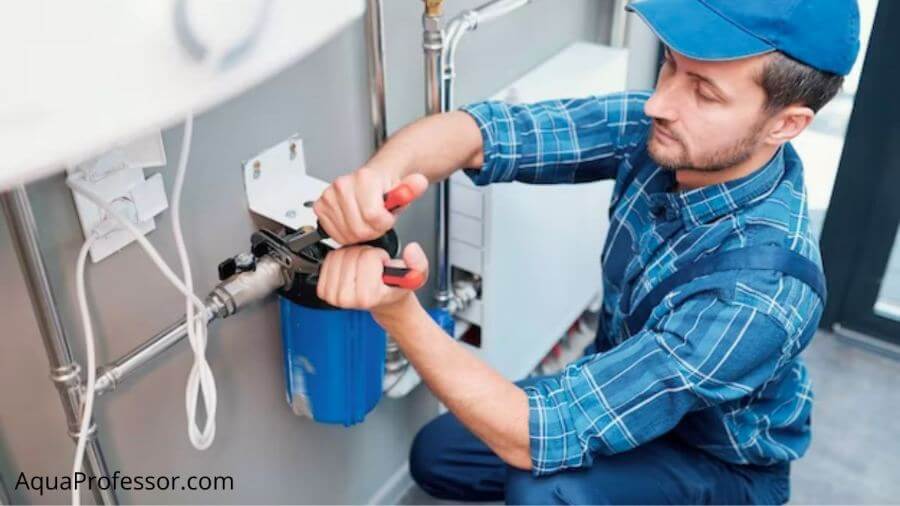
How It Works:
A nano-filtration or low-pressure Reverse Osmosis system is a relatively simple, one-step process. It reduces hardness without the regeneration of an ion exchange system or the lime usage and sludge production of lime softening.
A typical system recovers 75 percent of the incoming feedwater for use. The other 25 percent of the feedwater stream is rejected by the membrane and is disposed of as wastewater.
Hardness and Scale Reduction:
The nano-filtration technique can reduce around 85- 90% of hardness and hence, can be considered a good alternative for reducing hard water minerals for commercial applications.
Pros and Cons:
Pros
- It reduces hardness (including manganese) and TDS in water.
- It uses less chlorine, removes DBP precursors, and improves taste.
- Water pH after nano-filtration is non-aggressive.
- It also reduces arsenic, heavy metals, ammonia, and sulfates.
- The membrane life expectancy is around 5 to 7 years.
Cons
- It wastes around 7%–10% of water.
- More susceptible to fouling due to the concentrated nature of rejected water.
- It causes water to lose some alkalinity due to pH adjustment.
- High energy power is used.
Cost Estimation:
This system is more expensive than others, costing around $1.5 million to $2M. Hence, it’s not fit for domestic use.
🤔Do You Really Need a Water Softener With So Many Alternatives Out There?
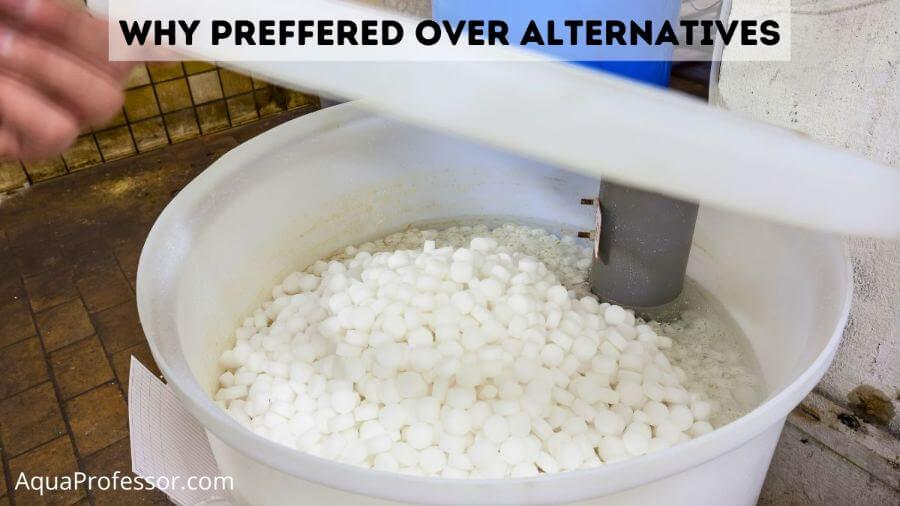
All the softener alternatives discussed above are indeed good alternatives to traditional water softeners. So, is there any need to get a water softener? Why is everyone buying them?
Well, whether you need a salt softener or not depends on the hardness of your water. All the alternatives discussed above can solve problems of low (0–3 GPG) to moderate (3–7 GPG) hardness at best.
However, if your water’s hardness level exceeds 7 grains per gallon (GPG), the softener alternatives may not be effective.
Water softening systems indeed pose various cons, like:
But it ensures you enjoy all the benefits of soft water. It helps you to have good skin and hair, reduces the amount of soap and shampoo consumption, and removes mineral buildup.
Conclusion:
Therefore, for high hardness, traditional water softeners are the only option for bathing, laundry, and the kitchen. But if you’ve mild to medium hardness, you can opt for water conditioners or descalers.
Don’t forget to test your water hardness through certified labs or water test kits to know the right water treatment for your household!
💡Water Softener Alternatives FAQs
How do you make hard water soft naturally?
There are many ways to soften water naturally, like:
1. Boiling removes temporary hardness.
2. Adding baking soda alters the pH level to a more natural state.
3. Adding washing soda can temporarily soften your water and make it good for washing clothes in washing machines.
Do salt-free water softeners really work?
Yes, studies have shown that salt-free water softeners like template-assisted crystallization (TAC) conditioners successfully reduce 90% of scale without adding salt or generating waste.
Why would you not want a water softener?
Water softeners do a good job of eliminating problems, but they have their flaws:
1. They increase sodium content in water
2. Degrade the environment by dumping brine solution into the ground.
3. It can require an upfront cost to install.
What can you use instead of salt in a water softener?
Potassium chloride is one of the popular softener salt substitutes in salt-based softeners. It functions similarly to regular salt but exchanges potassium for hard minerals rather than sodium ions.
However, using potassium chloride is five times more expensive than softener salt, generates excess brine, and uses three times as much salt to get the same benefits.
What is the cheapest way to soften water?
Boiling is the cheapest way to soften water but only works for temporary hardness. It works by removing all hard water minerals and settling them down at the bottom of the pot.
Adarsh is a Health & Nutrition Sciences graduate with expertise in environmental health. He is associated with ventures like Glacier Fresh Filter and Simpure Filter Systems. Through Aqua Professor, he intends to provide helpful information to every home to help them make smarter decisions.
